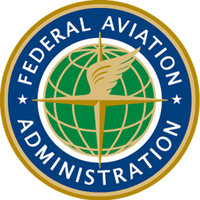Newark's Air Traffic Control Crisis: A Wake-Up Call for Aviation Safety
May 6, 2025, 4:23 am

Location: United States, Illinois, Chicago
Employees: 10001+

Location: United States, District of Columbia, Washington
Employees: 10001+
Founded date: 1958
A recent incident at Newark Liberty International Airport has sent shockwaves through the aviation industry. On April 28, air traffic controllers lost radar and radio communication for nearly 90 seconds. This brief blackout left controllers blind and deaf to the aircraft under their watch. The fallout was immediate and severe, leading to massive flight delays and cancellations that rippled through the airport for days.
Newark is a critical hub, handling over 48 million passengers annually. The outage triggered a cascade of disruptions, forcing United Airlines to cut 35 daily flights from its schedule. The chaos revealed a deeper issue: the aging infrastructure and chronic staffing shortages plaguing the Federal Aviation Administration (FAA).
Controllers, the guardians of the skies, were left vulnerable. Without radar or radio, they were mere spectators in a high-stakes game. The National Air Traffic Controllers Association (NATCA) confirmed the gravity of the situation. Controllers were unable to see, hear, or communicate with the planes they were responsible for. The emotional toll was palpable. Some controllers took time off to recover from the stress, with reports of visible distress and even heart palpitations.
The FAA has been grappling with a staffing crisis for years. The recent transfer of Newark's airspace management from New York to Philadelphia only exacerbated the problem. The facility in Philadelphia has faced multiple technology failures, raising alarms about safety. Controllers worry that these issues could lead to a tragic accident if left unchecked.
The FAA is currently short about 3,000 air traffic controllers. This shortage is not just a number; it represents a systemic failure in the aviation infrastructure. The average age of air traffic control towers is 40 years, and many radar systems are approaching the same age. The U.S. Government Accountability Office has warned that 76% of the FAA's air traffic control systems are unsustainable or potentially unsustainable. The clock is ticking.
Transportation Secretary Sean Duffy has promised a plan to upgrade the FAA's equipment and facilities. He also announced new hiring incentives, including bonuses, to attract more controllers. However, promises are just words without action. The aviation industry is at a crossroads. The safety of the flying public hangs in the balance.
United Airlines CEO Scott Kirby painted a grim picture. He noted that over 20% of the FAA controllers for Newark were absent during the outage. This chronic understaffing has left Newark unable to handle its scheduled flights. The Port Authority of New York and New Jersey, which oversees the airport, has invested billions in modernization. Yet, these improvements are futile without a fully staffed and modern air traffic control system.
The incident at Newark is not an isolated event. It reflects a broader crisis in U.S. aviation. The airspace is among the most congested in the world. As air travel demand surges, the infrastructure struggles to keep pace. The FAA's aging technology is a ticking time bomb. The risk of a catastrophic failure looms large.
The aviation community is sounding the alarm. Government watchdogs and industry experts have long warned that the current state of air traffic control is unsustainable. The potential for more travel disruptions is real. The FAA must act swiftly to address these issues before they escalate into a full-blown crisis.
The recent outage serves as a wake-up call. It highlights the urgent need for investment in air traffic control systems. The safety of millions of passengers depends on it. The FAA must prioritize modernization and staffing to ensure that controllers can effectively manage the skies.
In the wake of the Newark incident, the FAA's credibility is on the line. The public deserves transparency and accountability. The aviation industry must unite to advocate for change. The time for action is now. The skies cannot afford to be left in the dark.
As the FAA prepares to unveil its plans, the aviation community watches closely. Will it be enough to restore confidence? The stakes are high. The safety of air travel hangs in the balance. The Newark incident is a stark reminder that the status quo is no longer acceptable. The future of aviation depends on a robust and reliable air traffic control system. The clock is ticking, and the world is watching.
Newark is a critical hub, handling over 48 million passengers annually. The outage triggered a cascade of disruptions, forcing United Airlines to cut 35 daily flights from its schedule. The chaos revealed a deeper issue: the aging infrastructure and chronic staffing shortages plaguing the Federal Aviation Administration (FAA).
Controllers, the guardians of the skies, were left vulnerable. Without radar or radio, they were mere spectators in a high-stakes game. The National Air Traffic Controllers Association (NATCA) confirmed the gravity of the situation. Controllers were unable to see, hear, or communicate with the planes they were responsible for. The emotional toll was palpable. Some controllers took time off to recover from the stress, with reports of visible distress and even heart palpitations.
The FAA has been grappling with a staffing crisis for years. The recent transfer of Newark's airspace management from New York to Philadelphia only exacerbated the problem. The facility in Philadelphia has faced multiple technology failures, raising alarms about safety. Controllers worry that these issues could lead to a tragic accident if left unchecked.
The FAA is currently short about 3,000 air traffic controllers. This shortage is not just a number; it represents a systemic failure in the aviation infrastructure. The average age of air traffic control towers is 40 years, and many radar systems are approaching the same age. The U.S. Government Accountability Office has warned that 76% of the FAA's air traffic control systems are unsustainable or potentially unsustainable. The clock is ticking.
Transportation Secretary Sean Duffy has promised a plan to upgrade the FAA's equipment and facilities. He also announced new hiring incentives, including bonuses, to attract more controllers. However, promises are just words without action. The aviation industry is at a crossroads. The safety of the flying public hangs in the balance.
United Airlines CEO Scott Kirby painted a grim picture. He noted that over 20% of the FAA controllers for Newark were absent during the outage. This chronic understaffing has left Newark unable to handle its scheduled flights. The Port Authority of New York and New Jersey, which oversees the airport, has invested billions in modernization. Yet, these improvements are futile without a fully staffed and modern air traffic control system.
The incident at Newark is not an isolated event. It reflects a broader crisis in U.S. aviation. The airspace is among the most congested in the world. As air travel demand surges, the infrastructure struggles to keep pace. The FAA's aging technology is a ticking time bomb. The risk of a catastrophic failure looms large.
The aviation community is sounding the alarm. Government watchdogs and industry experts have long warned that the current state of air traffic control is unsustainable. The potential for more travel disruptions is real. The FAA must act swiftly to address these issues before they escalate into a full-blown crisis.
The recent outage serves as a wake-up call. It highlights the urgent need for investment in air traffic control systems. The safety of millions of passengers depends on it. The FAA must prioritize modernization and staffing to ensure that controllers can effectively manage the skies.
In the wake of the Newark incident, the FAA's credibility is on the line. The public deserves transparency and accountability. The aviation industry must unite to advocate for change. The time for action is now. The skies cannot afford to be left in the dark.
As the FAA prepares to unveil its plans, the aviation community watches closely. Will it be enough to restore confidence? The stakes are high. The safety of air travel hangs in the balance. The Newark incident is a stark reminder that the status quo is no longer acceptable. The future of aviation depends on a robust and reliable air traffic control system. The clock is ticking, and the world is watching.
